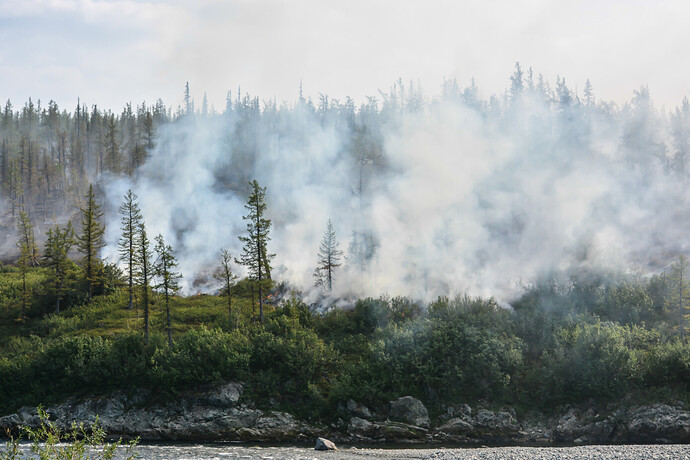The Northern Hemisphere is currently experiencing a severe wildfire crisis. According to the Copernicus Atmosphere Monitoring Service (CAMS), a European Union initiative, the recent months of April and May have witnessed an unprecedented surge in wildfire activity in Canada and Eurasia.
In Canada, the province of Alberta has been heavily affected, with 61 active wildfires, including 16 that are currently out of control. The neighboring province of Saskatchewan has also witnessed significant wildfire activity, surpassing the annual average with 193 wildfires reported so far this year. British Columbia is grappling with 55 active wildfires, resulting in high to extreme fire danger across various regions. The coastal areas, central interior, and northeast of the province are particularly vulnerable, with forecasts predicting further significant fire activity.
Wildfires have also ravaged Canada’s east coast, specifically Nova Scotia. More than 20,000 hectares have been burned due to 13 active wildfires, leading to the displacement of thousands of residents. The smoke and haze from these fires have reached the United States, prompting air quality alerts in New Jersey and southeastern Pennsylvania.
In Ontario, a substantial increase in wildfire activity has been observed towards the end of May, prompting an extreme fire warning for certain parts of the province. To mitigate the situation, the Ministry of Natural Resources & Forestry has implemented a Restricted Fire Zone in the Northeast and Southern regions.
CAMS data reveals that carbon emissions from wildfires in Alberta have already reached approximately 17 megatonnes this year, surpassing the levels seen during the extreme fires of May 2019. Similar record or near-record levels of emissions have been observed in Saskatchewan, British Columbia, Ontario, Nova Scotia, and the Northwest Territories.
Eurasia has also been significantly impacted by wildfires. Russia has witnessed fires across various regions, including Chelyabinsk, Omsk, Novosibirsk, and Primorye. Kazakhstan and Mongolia have also experienced substantial wildfire activity. The Aerial Forest Protection Service in Russia reported 55 active fires affecting almost 5,592 hectares across 11 regions, with Sverdlovsk Region being the worst affected.
CAMS data indicates an increase in wildfire activity in Russia’s Omsk and Tyumen regions during April and May. The values for fire intensity were significantly higher than average during this period. Novosibirsk Region also experienced higher than average fire intensity, with peak values observed around May 10th. Despite the surge in wildfire activity, overall carbon emissions in Russia during April and May are lower than the 20-year average.
